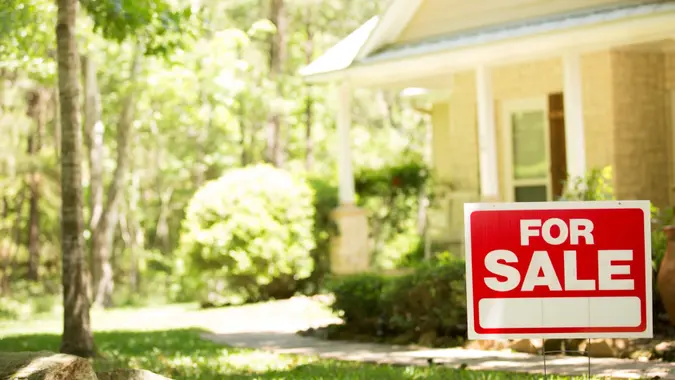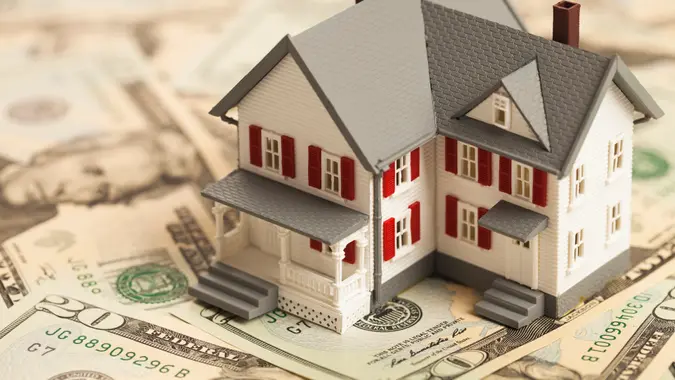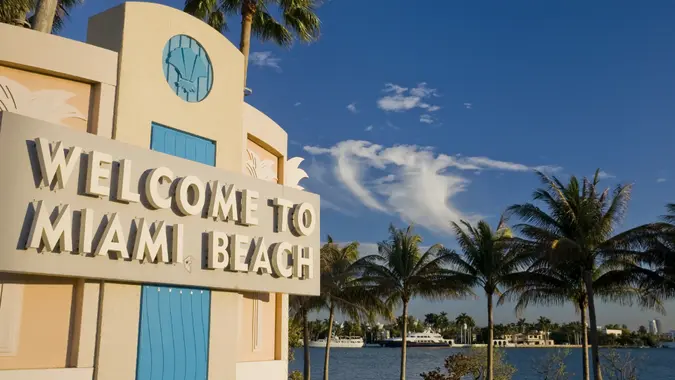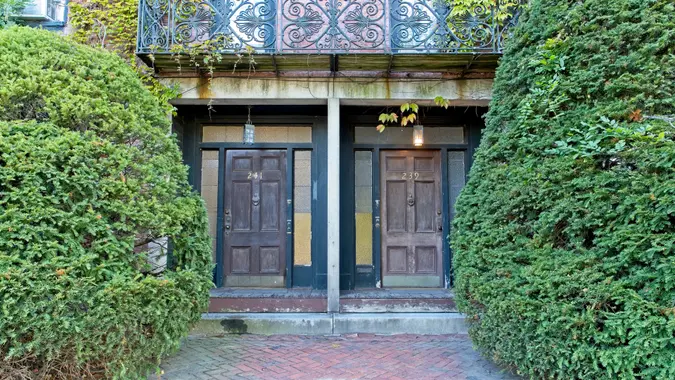States Where Homeowners Insurance Costs the Most — and the Least

Commitment to Our Readers
GOBankingRates' editorial team is committed to bringing you unbiased reviews and information. We use data-driven methodologies to evaluate financial products and services - our reviews and ratings are not influenced by advertisers. You can read more about our editorial guidelines and our products and services review methodology.

20 Years
Helping You Live Richer

Reviewed
by Experts

Trusted by
Millions of Readers
The average cost of homeowners insurance varies by state and in some cases, by thousands of dollars.
According to a new report by Insurance.com, the average homeowners insurance rate in the U.S. is $2,777 per year — or $231 monthly — for $300,000 in dwelling coverage and liability and a $1,000 deductible.
Oklahoma is the most expensive state for home insurance at $5,317 per year, while Hawaii has the lowest home insurance rates, averaging $582 in 2024. States with more natural disasters, such as hurricanes, wildfires and tornadoes, usually have higher insurance rates.
Where you live in the state also makes a difference. Insurance.com pointed out that coastal homes are generally more expensive to insure than those inland.
States With the Highest Homeowners Insurance Rates
Based on the report, these five states – which are prone to severe storms, including tornadoes and hail – have the highest insurance rates.
- Oklahoma: $5,317/year.
- Kansas: $4,939/year.
- Nebraska: $4,893/year.
- Arkansas: $4,201/year.
- Texas: $4,142/year.
States With the Lowest Homeowners Insurance Rates
And these are the top five least expensive states for homeowners insurance.
- Hawaii: $582/year.
- California: $1,380/year.
- Washington D.C.: $1,520/year.
- Vermont: $1,540/year.
- New Hampshire: $1,551/year.
States also have different rules regarding what a standard home insurance policy includes. Some standard home insurance policies exclude or have separate deductibles for wind storms or other events, which Insurance.com said can greatly impact rates.
Your insurance provider may also increase your rates if severe weather events become more frequent, or if there’s an increase in the cost of materials or a skilled labor shortage, according to Travelers Insurance. When the cost of labor and building materials goes up, so does the cost to repair or rebuild a home.
Home insurance rates have been getting much more expensive recently, There have been a higher number of claims over the past few years, according to Money, which exceeded what actuaries predicted. Citing government data, Money pointed out that individual weather and climate events increased from the previous high of 22 in 2020 to 28 last year, resulting in at least $1 billion of damages.
Stuart Winchester, founder and CEO of Marble, expects home insurance rates to be 10%-15% higher this year compared to last, Money reported. This could add an extra $100 to $250 per year to your premium, or even hundreds more for those in areas where home values or insurance rates are higher.
 Written by
Written by  Edited by
Edited by 

























